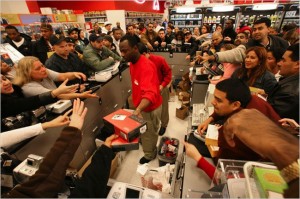Mobile health is here to stay. The mobile health market has and continues to see tremendous growth. If you didn’t receive a Fitbit or Jawbone this holiday season, chances are you know someone who did. Do you have RunKeeper on your phone? How about MyFitnessPal?

In the event you haven’t hopped on the mobile health express, here are a few data points that will catch your attention:
- The mobile healthcare services market will reach $26 billion worldwide by 2017
- There are now about 97,000 health and wellness related smartphone apps
- Fitbit wearable devices are now stocked in 30,000 stores around the world and this holiday season there were 3.1 times as many Fitbits shipped then the prior year
- CES 2014 saw a 40% year over year increase in the digital health footprint at their January event in Las Vegas
- And if you still aren’t convinced, there is significant consumer demand for mobile wellness, look no further than celebrity gossip blog Perez Hilton, for a picture of Ryan Reynolds wearing a Fitbit
As more people become mobile health consumers, what does this mean for employer wellness?
Employers go to exhaustive and often expensive lengths to promote employee health and wellness. Employers develop internal programing and bring in external wellness providers, all with the goal of creating effective wellness programs. Driving wellness participation, or engagement, is a main focus of any wellness program. It doesn’t matter how great the wellness program is; if the program suffers from low engagement, it will have minimal positive impact on the employee population.
So what exactly is the key to developing a high-engagement wellness program that employees want to participate in?
There is no single answer to this question but part of the solution lies within the growing consumer mobile health market. As the market data shows, consumers are gravitating to particular wellness trends – mobile wellness apps and wearable tracking devices – and doing so in very large numbers. Employers need to find ways to embrace this consumer trend, not fight it.
Embracing the consumer trend means finding ways to align consumer demand with an employee wellness program. Rather than offering a wellness program that forces employees to adopt a wellness portal or some other technology or service that they have shown no interest in, employers should find a way to allow employees to use the wellness apps and devices they are familiar with and, in many cases, already using on their own. This form of wellness democracy will get employees excited about a wellness program and increase engagement.
Fighting the consumer mobile wellness trend seems similar to forcing employees to use a BlackBerry when they have demonstrated their demand for an iPhone – it’s a losing proposition in the long run.
The consumers have spoken… all employers need to do is listen.
P.S. Employers also benefit from this trend with better data from verified activities – more on this in another post.












